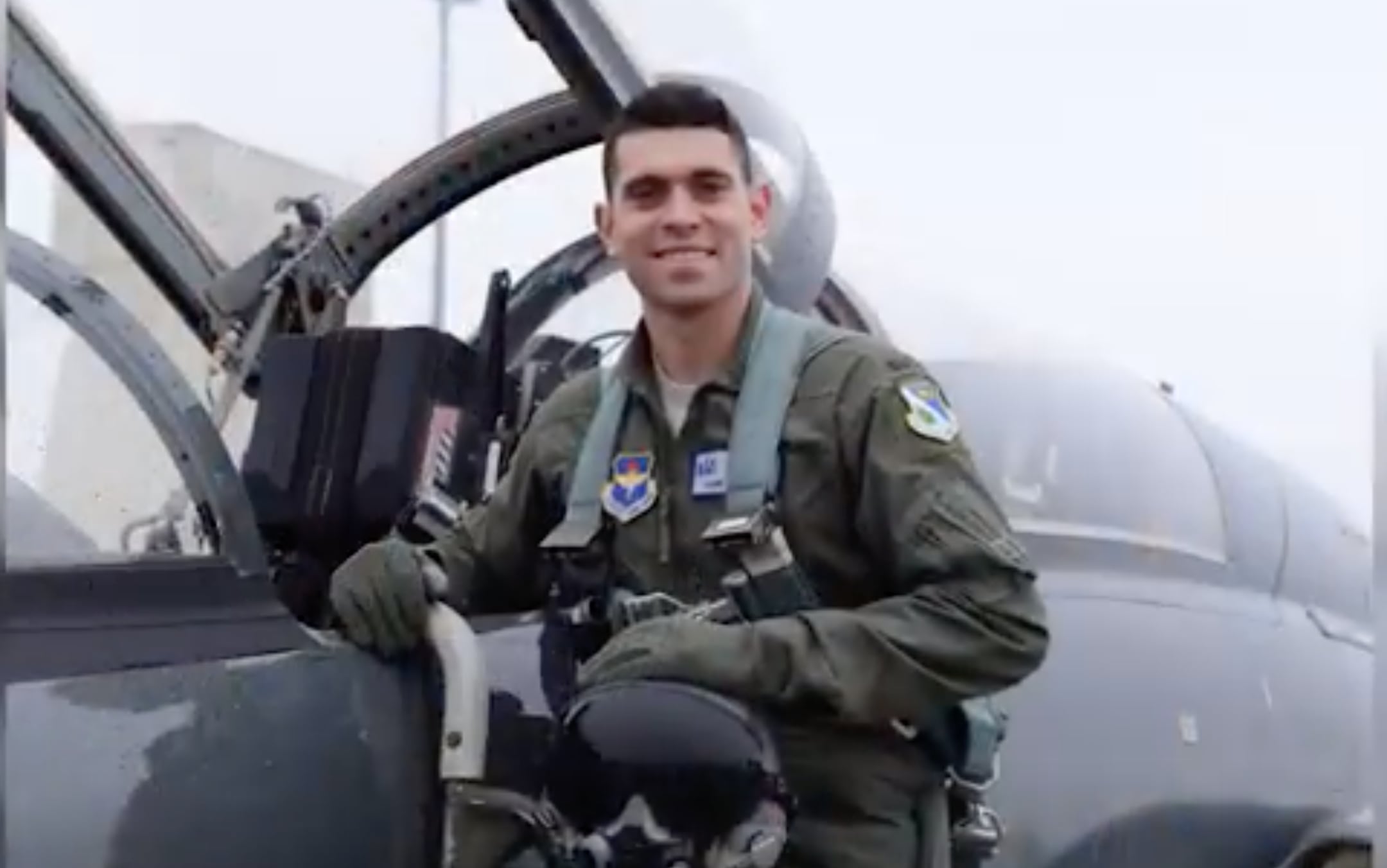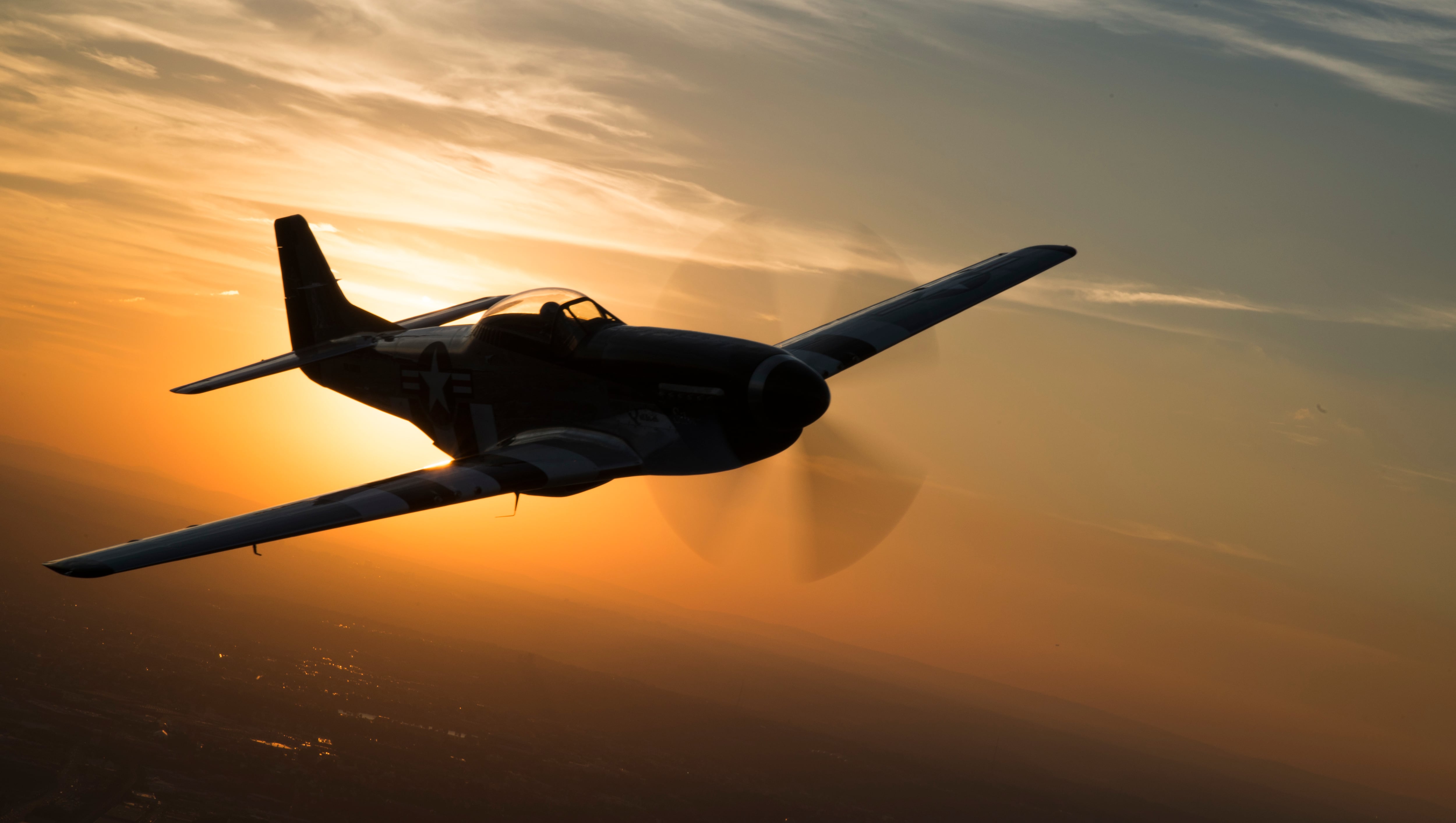A compressor stall during a nighttime T-38 touch-and-go practice landing led to a crash that killed an experienced instructor pilot last November at Laughlin Air Force Base in Texas, an investigation has found.
Capt. John Graziano died Nov. 13, 2018, when he and his co-pilot, Capt. Mark Palyok, tried to eject from the stalling and lurching trainer aircraft, barely a few feet above the ground. Palyok’s seat ejected in time, but the T-38C Talon crashed fractions of a second before Graziano’s seat likely would have ejected, according to the Air Education and Training Command’s accident investigation board, which released its report on Monday.
Both were instructor pilots at Laughlin’s 87th Flying Training Squadron.
The report shows how quickly the events unfolded, with barely a handful of seconds elapsing from the time the compressor stalled with a loud, unfamiliar noise, to when the plane crashed. During that time, Graziano took control of the plane, tried to identify what had gone wrong and fought to recover the aircraft.
The report also said Graziano might have been able to avoid the crash after taking control of the T-38 had he followed any of three different procedures after the compressor stall — all of which involved more quickly selecting max power, or afterburners that add 40 percent more power when the engines are already at full rotational speed.
However, Graziano did not apply the necessary throttle and take the right maneuvers in the brief time he had, the report said.
RELATED

Nearly 45 minutes into the nighttime flight, immediately after touching down, the pilots heard a loud noise and asked, “What’s that?” They heard a buzz for about a second and a half, the right engine’s rotational speed decreased, and it lost most of its thrust. At the same time, the plane became airborne again. Palyok at first thought a tire had blown, but when the plane began yawing and rolling to the right, he recognized it was a compressor stall.

Graziano took control and began revving the engines’ to full rotational speed, but the right engine never stabilized and continued to oscillate between 65 percent and 93 percent of full-speed revolutions per minute.
Stall warnings began blaring as the plane continued to roll to the right and drifted right over the edge of the runway toward the grass. The plane failed to regain speed, the stall warning continued, and the plane never climbed higher than 10 feet above ground level.
It soon touched down on the grass, about 55 feet from the runway surface and traveled about 350 more feet. Graziano pulled the nose up and, for the first time, selected max power, which went to the left engine. It became airborne again.
About a second later, Graziano ordered an ejection as the plane reached a full stall and rolled to the right. The nose also dropped, as Graziano released the stick. Less than two seconds later — after Palyok’s seat ejected, but right before the sequence would have ejected Graziano — the plane crashed in the grass and rolled, killing Graziano.
The investigation board, which was headed by Brig. Gen. James Sears, was unable to conclusively pin down what caused the fatal compressor stall, but ruled out problems such as maintenance mistakes, foreign object damage or engine structural failure. The report said a combination of the nose pitching up at a high angle while at a low airspeed, a low compressor inlet temperature, atmospheric variations and temperature and pressure distortion, and jet wash could have combined to create the stall.
The report also said that while both were qualified instructor pilots who had practiced for emergency compressor stall scenarios, neither had actually experienced such a stall. Palyok told investigators that the actual compressor stall sound he heard was not similar to what he had heard in simulators. This may have been why he mistakenly thought a tire had blown.
The investigation also concluded that the low illumination that night — Palyok later described the runway environment as “a black hole” — and Graziano’s misperception of how the emergency was rapidly evolving contributed to the crash.
This was the fifth T-38 crash in a one-year time span. In November 2017, a gearbox failure led to a fatal T-38 crash at Laughlin. Subsequent T-38 crashes occurred at Columbus Air Force Base in Mississippi in May 2018, Vance Air Force Base in Oklahoma in August 2018, and Sheppard Air Force Base in Texas in September 2018.
“Everybody’s hurting," Col. Lee Gentile, commander of the 47th Flying Training Wing, said shortly after the accident. "Everybody, including me. That’s our second loss in the last year, the second T-38 crash. There’s a lot of folks here on Laughlin, teammates, airmen, family, friends, that are grieving the loss of John Graziano, and my heart goes out to his friends and his family as they work through this difficult time in their lives.”
This article has been updated to reflect how quickly events unfolded and to add Gentile’s comments.
Stephen Losey is the air warfare reporter for Defense News. He previously covered leadership and personnel issues at Air Force Times, and the Pentagon, special operations and air warfare at Military.com. He has traveled to the Middle East to cover U.S. Air Force operations.










